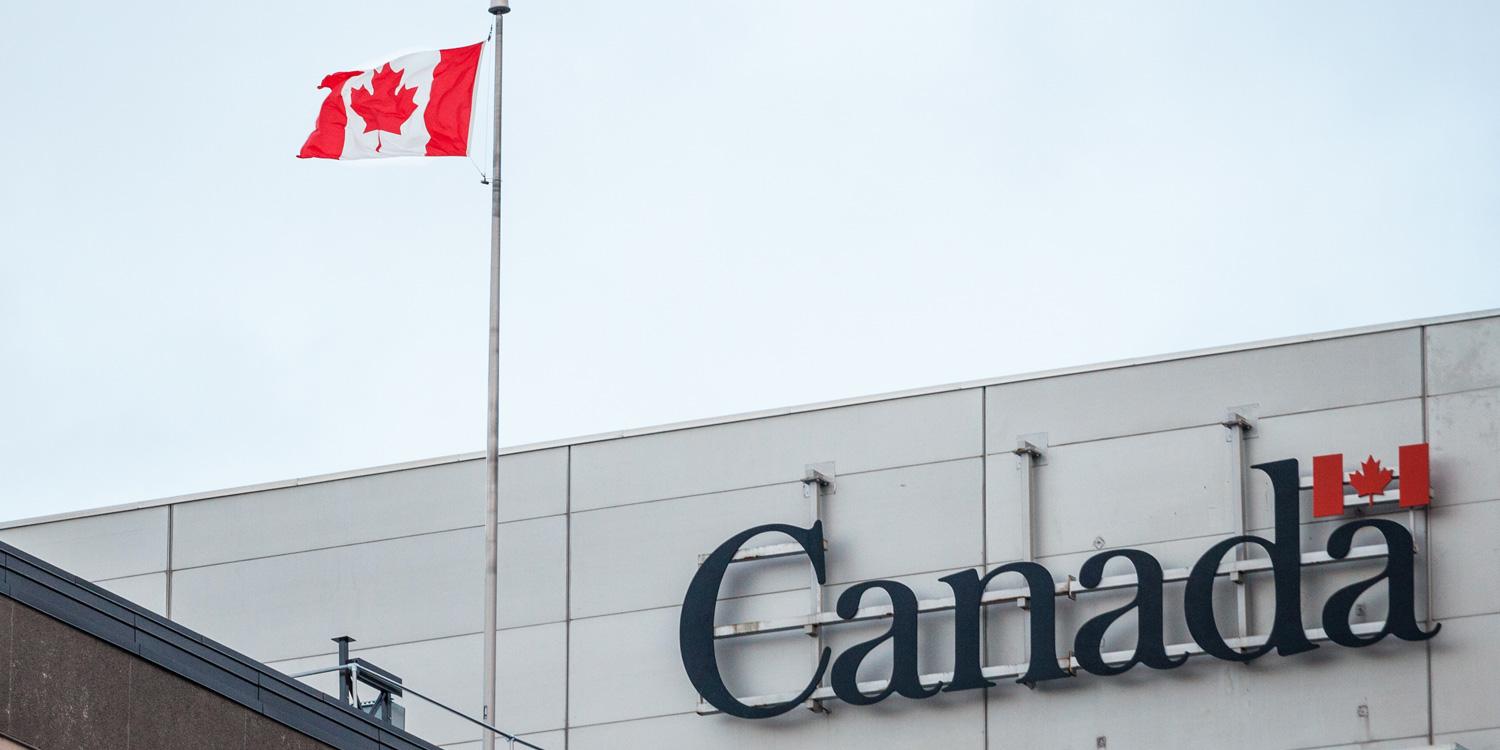How to help homegrown companies succeed in Canada
By Leah Golob | April 11, 2025

As tariffs undermine trade with the United States, Canadian ventures looking to do business at home face interprovincial roadblocks. But there are simple ways to tackle this problem.
Over the past few months, trade tensions with the United States have caused disruptions across sectors. And with the effects of escalating tariffs and retaliatory countertariffs, it’s only going to get worse: in a recently published report, Canadian Chamber of Commerce chief economist Stephen Tapp says the country could be looking at a recession later this year.
This uncertainty has prompted a number of Canadian companies to forecast lower sales than anticipated, particularly in manufacturing and sectors that rely on discretionary spending; many are also scaling back on hiring and investment plans, the Bank of Canada reported in March. A solution might involve looking closer to home. As federal minister of transport and internal trade Anita Anand recently pointed out, “[o]ne of Canada’s strongest trading partners is … Canada.” The trick is figuring out how to promote freer trade within our national borders.
As it becomes more challenging to do business with our largest trading partner, there is an urgent need to make it easier to do business within Canada. Here, three experts weigh in on what they see as the key roadblocks and major opportunities for ventures in this country — and offer recommendations on how best to tackle these issues.
Encourage interprovincial trade
Pascal Chan is the vice president of strategic policy and supply chains at the Canadian Chamber of Commerce. He says that to mitigate the destabilizing effects of an increasingly precarious trade relationship with the U.S. and to build more resilient supply chains, governments should take bold action to bolster trade between provinces.
“We’ve seen a lot of strain on our supply chains over the last few years: extreme weather events, the COVID-19 pandemic, blockades, as well as other geopolitical events happening overseas, such as Russia’s full-scale invasion of Ukraine, Houthis rebel attacks on merchant vessels in the Red Sea, droughts in the Panama Canal, the U.S. East and Gulf Coast Port Strike. Here at home, a number of labour disruptions have shut down major components of our supply chain. The threat of disruption has caused a lack of predictability and there are concerns that this might lead to Canada becoming a well-meaning but unserious player on the international stage.
“We’re seeing this persistent uncertainty in our trade relationship with the U.S. We really can’t afford to ignore opportunities to strengthen trade within our own borders — it shouldn’t be easier for Ontario to trade with Florida than Saskatchewan. Breaking down those outdated, self-imposed barriers is one of the biggest economic opportunities we have, and one we can’t afford to waste, given that interprovincial trade drives one-fifth of GDP but internal trade barriers act like 21 percent tariffs. Removing them could boost GDP per capita by 4 percent. Provincial and territorial governments, the federal government: they need to get momentum going to boost the economy and improve long-term stability. We’ve seen some great political will over the last couple of months and I’d say the discussions during the First Ministers’ meeting on rapidly advancing interprovincial trade are definitely a move in the right direction.”
Rethink regulatory bottlenecks
Daniel Teeter is a PhD economist from Queens University who recently co-published a paper on breaking down Canada’s internal trade barriers. To help streamline trade for small and medium-sized businesses in Canada, Teeter says, there are prohibitive, technical and administrative barriers that should be dismantled.
“Maybe some areas of the economy were deemed worth protecting at one point, but it’s causing regulatory barriers that are inhibiting the free flow of goods and services and labour. There’s prohibitive barriers that may explicitly prevent trade between provinces — the inability to ship alcohol directly to consumers out of province or some provincially registered meat-processing plants that can’t actually sell their product to other provinces. There are also technical barriers — sector-specific regulations that may differ between provinces. So each province could have their own trucking regulations — the maximum weight allowed on a truck, or different dimensions for the truck itself. A report from the Macdonald-Laurier Institute estimated these trucking regulations add up to an 8.3 percent increase in freight costs, which works out to a $500 million annual loss just from these differences.
“Then there’s administrative barriers — this is all the paperwork requirements that go into conducting business or trying to work in a different province. Business licensing or permitting, they’re little costs that could be pretty big for a small business. While the Canadian Free Trade Agreement works to liberalize trade, there’s still a lot of exemptions. I always encourage efforts to remove these exemptions — Anita Anand, the federal minister of innovation, science and industry, recently released a statement saying that 20 federal exemptions were removed, in addition to the 17 removed the year before. So there’s a lot of progress being made there. I’d always encourage unilateral action from provinces as well.”
Make it easier for startups to commercialize
Avinash Persaud is vice president of the Hardware Catalyst Initiative at ventureLAB, an incubator for founders developing hardware and products related to semiconductors. He believes government and post-secondary institutions have key roles to play in driving Canada’s knowledge-based economy.
“It’s important that we think about commercialization, because no matter how great our R&D is, until it generates GDP, until it generates jobs, until it generates tax revenue, until it has an impact on broader society, it has minimal value. I’ve worked with technology companies that have struggled with both the time and cost required to license IP. Right now, there’s no uniform process and that creates inefficiencies. Every post-secondary institution has a unique way of dealing with IP licensing. There’s an opportunity there to streamline that process, where the goal is not revenue generation that will be derivative, but commercialization opportunities — and you could [give] greater preference to Canadian startups and scale-ups that want to leverage university IP.
“Investment support is also going to be more critical now. One of the key challenges with the startups and scale-ups I work with is that a lot of them are geared to situations where they almost have to be a proven entity before they can access funding opportunities. In Taipei, the government has a budget that they allocate specifically to riskier opportunities where administrators won’t be punished if something didn’t work out. It creates a little sandbox of investment, an environment where startups and scale-ups could sell into the government. We have to be mindful of taxpayer dollars, but I think there’s room for some risk-taking in areas where there are novel solutions — like green technology, AI. We have many companies that are doing great things, but for a startup to get into a government procurement chain is very difficult. If there were some channel where this is an easier path that would make opportunities to help our startups and scale-ups grow.
“At the end of the day, commodities are critical, but they’re nowhere near as impactful to the GDP as the knowledge-based sector. You look at Nvidia — its capitalization is more than Canada’s economy for an entire year. It’s easy to focus on agriculture and logging and fisheries and minerals and oil and gas — these things are important, but they have made us complacent about our knowledge-based sector. Having worked with the technology sector, I’m continually impressed with the capabilities we have. That’s where we need to invest for our future. You don’t react to a crisis with long-term planning — you’re reacting to the immediate situation. But we should collectively be looking at longer-term strategies and not waiting for a crisis. We have to deal with interprovincial barriers. We need a strategy analogous to the Interstate Commerce Act in the U.S., to align across the country — not just regionally — to the benefit of all. At the end of the day, Canada has some great assets. We need to leverage them.”
Image source: iStock
 Leah Golob
Leah Golob